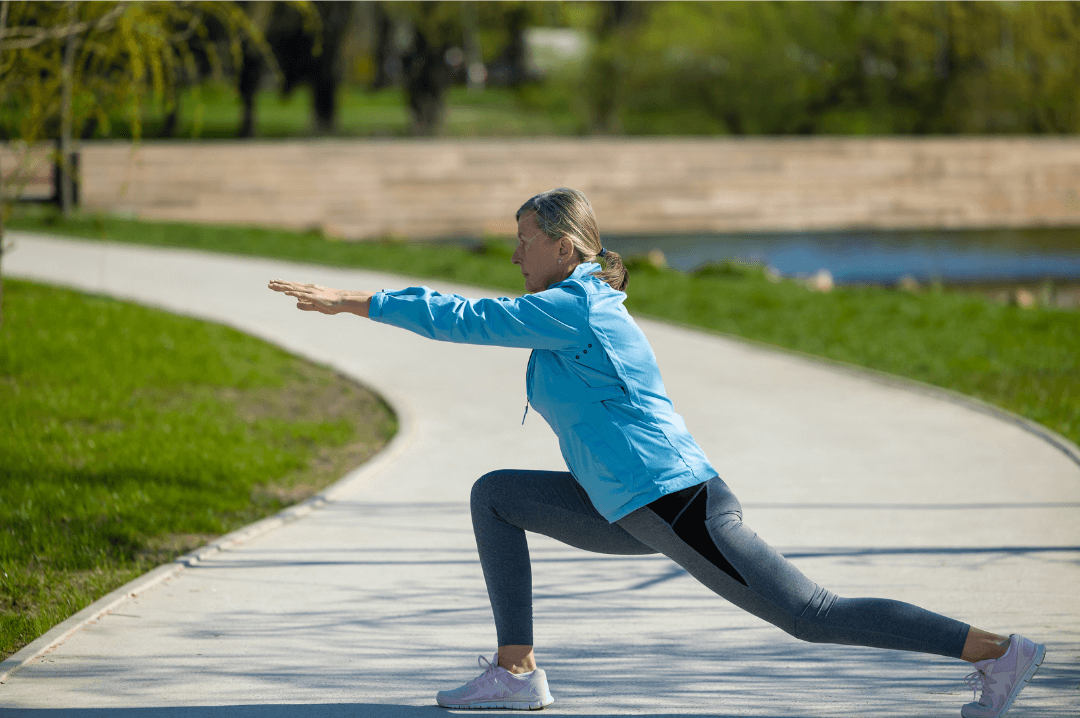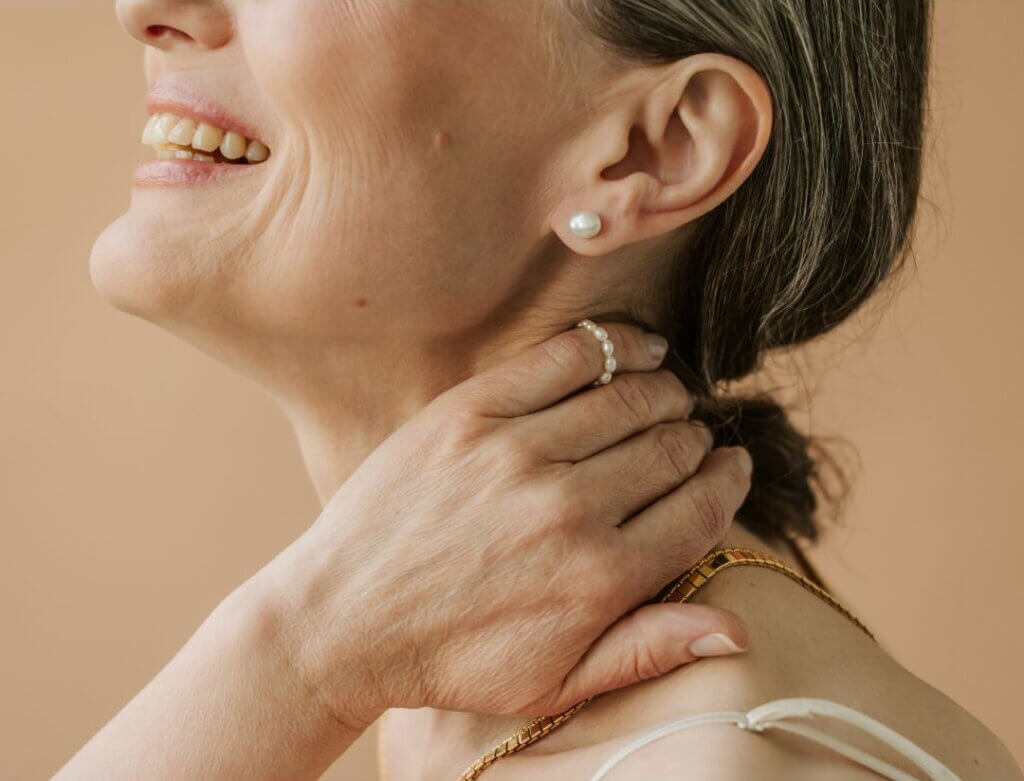Have you ever wished fitness felt less like a chore and more like… just part of your everyday routine? This month on My Guest Insights, I’m thrilled to introduce Angela Webster, a musculoskeletal physiotherapist who’s passionate about integrating functional fitness into our daily routines. Think: strength, stability, and mobility – all from doing simple, feel-good exercises that fit naturally into your day. Let’s dive in and find out how to make movement effortless, sustainable, and surprisingly joyful!
What is functional fitness and why does it matter?
Let’s start with the basics. What exactly is functional fitness, and how is it different from traditional workouts?
Firstly, the goal of functional fitness is unique to you and recognises the competing demands of your life.
The components of physical fitness we all need are cardiovascular, strength, mobility and balance. Training them specific to the demands of our lives will be more effective. The body works on a simple principle that good information in leads to good information out. You need to train it how you use it. Suppose you want stronger knees to help with lifting. In that case, you will train the whole body in balance by doing resisted sit-to-stands or squats rather than using isolated knee extensions at the gym.
Environment, emotions, and mindset matter, too; they are all part of the input. Incorporate what you enjoy and adds energy to you. Think positively about what you are doing; try something different if this remains a struggle.
Secondly, functional fitness isn’t strictly a workout, as it can include normal everyday activities performed with more vigour. For example, if you need to carry a heavy backpack to lug work equipment, wear it well and with enthusiasm rather than letting it wear you down. It’s now part of your functional fitness.
What are the benefits of functional fitness in daily life?
We hear a lot about moving more, but what are the real-world benefits of functional fitness?
On an individual level, it’s about having enough capability to meet what life throws at you. We can focus physically, but it’s also about mental and emotional capability!
I work in Occupational Health, so if people are functionally fit, it’s also good for business and society. We are all stronger together!
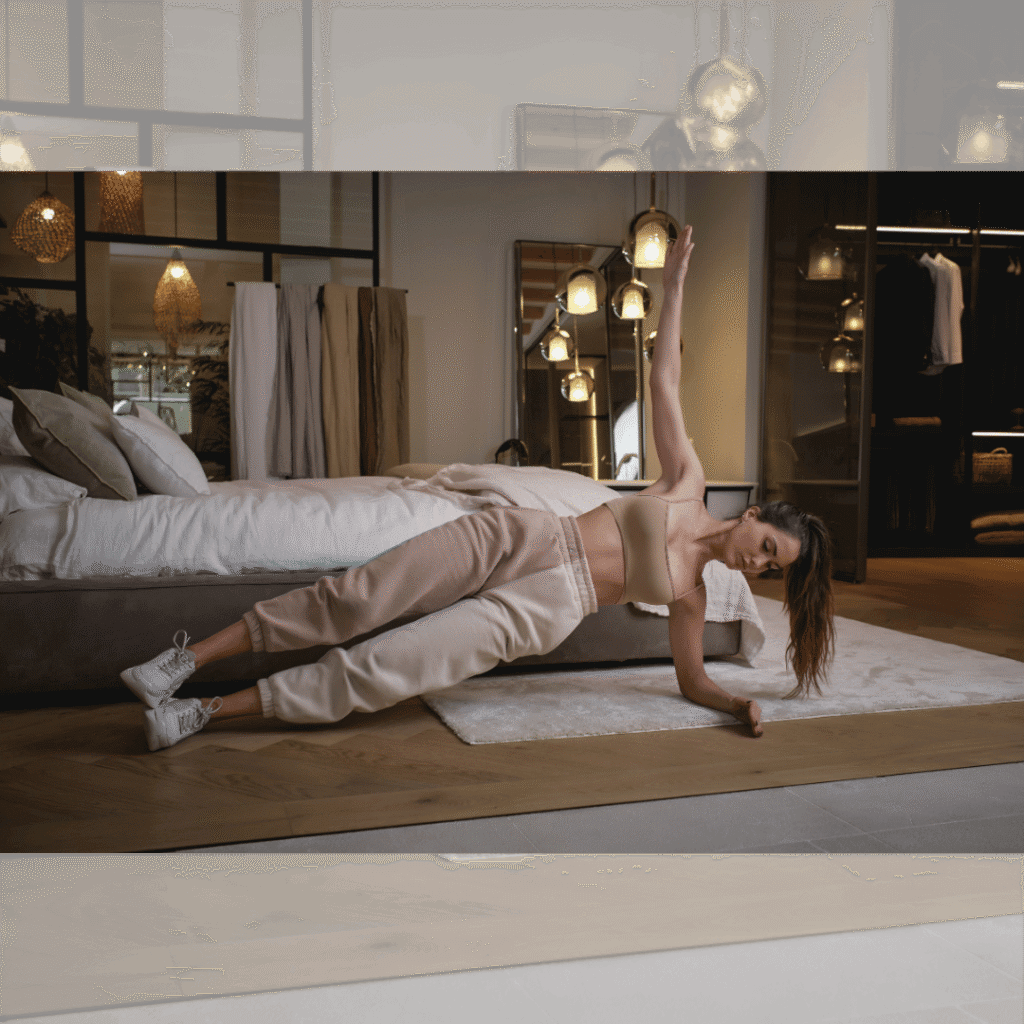
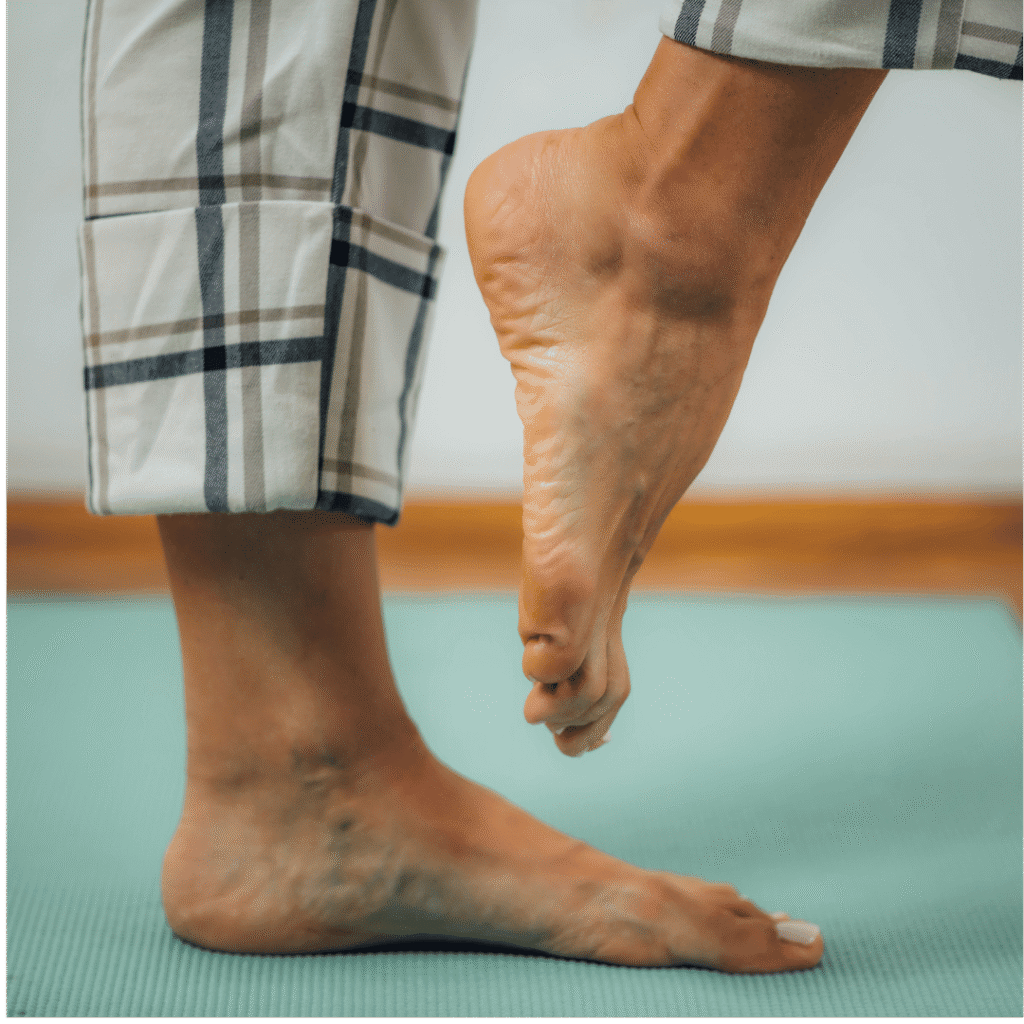
Tell us, how do you implement functional fitness into your day?
I have my very own Health and Wellbeing Champion, Sonny, a black-and-white border collie who’s moved from farming to people care.
Sonny is particularly good at helping me meet my cardio needs by insisting I walk or run faster. I also cycle to work once a week. For me, walking, running, and cycling are activities that improve my mental wellbeing and allow me to process my thoughts and enjoy my surroundings by being outdoors. If it’s a day where I’ve a lot to think about, I allow myself to go slower and I see it as a mental or wellbeing workout. On days I want to block thoughts out and stop ruminating, I up my speed, turn on faster music and focus on my physical goals. I have to walk the dog and get to work anyway, so this fits nicely into my life. Involving a friend, keeping it simple, and linking it to everyday activities are well known and effective ways of building habits.
I know muscles lose mass and strength with age and menopause – I also feel it! I know it’s not inevitable and that resistance training can reverse this. However, I’m no gym bunny and get bored quickly.
- In the morning: The best way for me is to have a dumbbell under the bed that rolls out when I reach for my shoes. I do 6-10 reps, 2 sets, 2 x week of sit-to-stands, some bicep curls and hands above head. I ensure I keep a good posture and core stability. That’s under 5 minutes, and it trains my muscles on how I use them on routine daily tasks.
- At night: When watching TV, I try to see how long I can do a front and side plank. This helps with my postural endurance. Sadly, it is still very quick; I’m not able to hold the posture for a long time yet!
- For balance: I stand on one leg while brushing my teeth.
- For bones: I always take the stairs down, never the lift, so there is good weight-bearing impact. Resistance training is also good for bone density.
- For flexibility: I stretch my tightest muscles (calves and hip flexors) when waiting for the kettle to boil.
- For pelvic floor: I include these when doing any other exercise.
One simple movement most people should be doing
If there’s one movement that almost everyone should be doing but probably ins’t. What would it be?
Ahh, that’s a tricky question. For it to be functional, it probably should be common. So, I would say to turn sitting to standing into functional fitness, as that is a building block movement.
- For cardio: how many can you do in one minute?
- For strength: what’s the heaviest weight you can do 10 well, but not 11? Rest for a couple of minutes and repeat.
Doing this 2- 3 times a week becomes a total body workout that applies to how we should use our bodies when lifting and meets the Chief Medical Officer’s guidelines on resistance training.
However, there is a simple movement that many people take for granted: breathing. Of course, we are all breathing, but are we breathing well? The diaphragm, the most important skeletal muscle in the body, plays a crucial role in our breathing. This dome-shaped muscle descends to draw in air, causing your tummy to gently rise as you inhale.
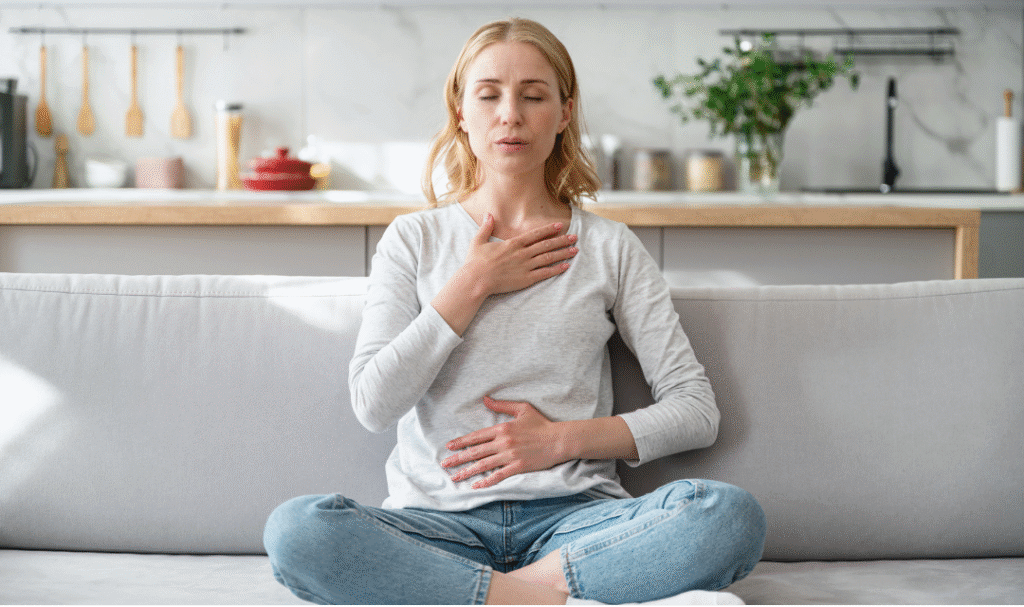
Interesting facts about the diaphragm:
- It is supplied by the vagus nerve, linking it to our wellbeing and relaxation.
- It mobilises the digestive system.
- It contributes to core stability by increasing intra-abdominal pressure.
- It enhances posture, reducing the need to use other muscles that can increase neck and shoulder tension.
Tips for using the diaphragm effectively:
- Sit with a gentle recline (about 10 degrees) to give it space to move.
- Rest your hand on your tummy to feel the rising breath.
- Close your eyes, ground your feet to the floor, or meditate.
- Engage the diaphragm before lifting, ensuring you are not sucking in or bracing.
What’s on the horizon?
From your professional lens, what do you see ahead in the world of functional fitness or being functionally fit?
I expect technology will play a bigger part. I’m curious about the use of augmented reality glasses to recreate and train specific functional demands of everyday life, sports, and work. However, I hope we don’t lose sight of the powers of simple measures readily available to improve our wellbeing: outdoors, friendship, using our bodies as designed for walking, running, climbing, jumping and simply having fun!
Closing note:
Thank you to our guest Angela Webster, for helping us rethink fitness in such a beautifully simple and powerful way. If you’ve been stuck in the “I should work out” mindset, maybe it’s time to flip the script and ask: how can I move better in what I already do? Let’s make movement feel good again – one functional step at a time.
And if you’re curious how one small habit can shift your whole day, here’s how my morning walk transforms my energy and mood – or why not sign up for one of our Move & Groove for Good challenges to get inspired and start your own feel-good routine?

About the Author: Angela Webster
Angela Webster is a highly experienced Musculoskeletal Physiotherapist and Occupational Health specialist with over two decades of hands-on experience in operational and safety critical workforces. She is the founder of Joint Works, where she partners with companies to deliver on-site physiotherapy services, develop proactive workplace health strategies, and support employees with musculoskeletal disorders to thrive at work. Her evidence-based approach blends compassion with impact, improving both individual wellbeing and organisational productivity. Visit Joint Works to find out more.
She is also an active committee member of the Association of Chartered Physiotherapists in Occupational Health and Ergonomics (ACPOHE) and the Chartered Society of Physiotherapy London Regional Network, keeping her at the forefront of workplace health innovation.
This blog provides general information and discussions about health, wellness, career, and parenthood. The information shared is for informational purposes only and is not intended to replace professional advice of any kind, including medical, health, career, financial, or legal advice. Always seek the guidance of a qualified professional regarding any questions or concerns you may have.
We only promote products, services, and resources that we genuinely believe are beneficial. However, we encourage you to research products independently and consult a qualified professional if necessary.
Some of the links on this blog are affiliate links, meaning we may earn a commission if you make a purchase through them at no extra cost to you. This helps support our work and allows us to continue sharing valuable content.
For the full website disclaimer, please visit the Terms and Conditions page.
For the full affiliate disclosure, please visit the Affiliate Disclosure page.

